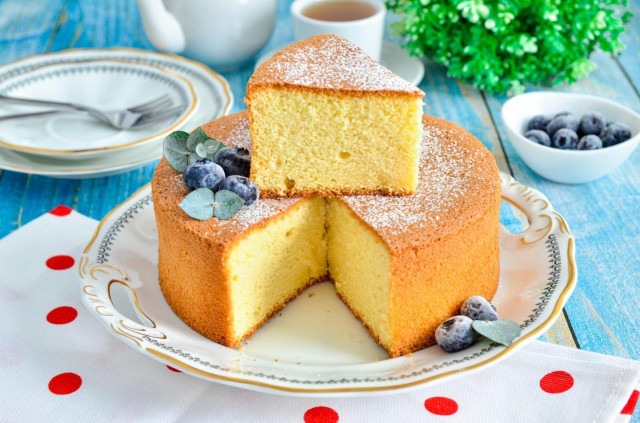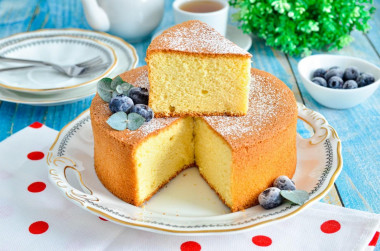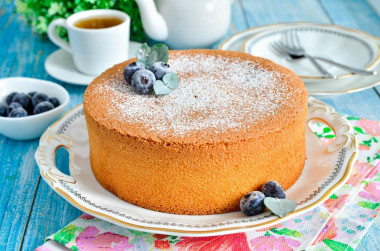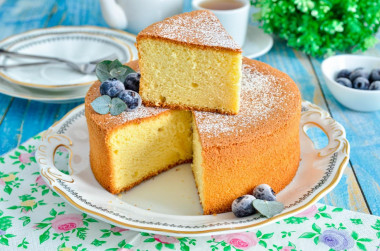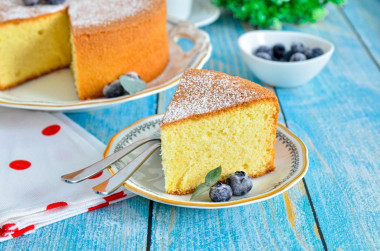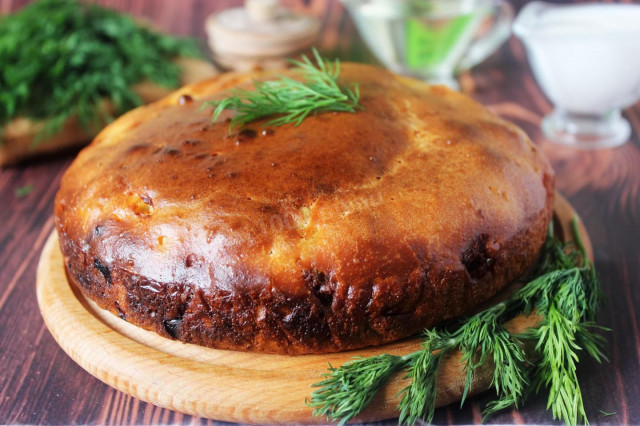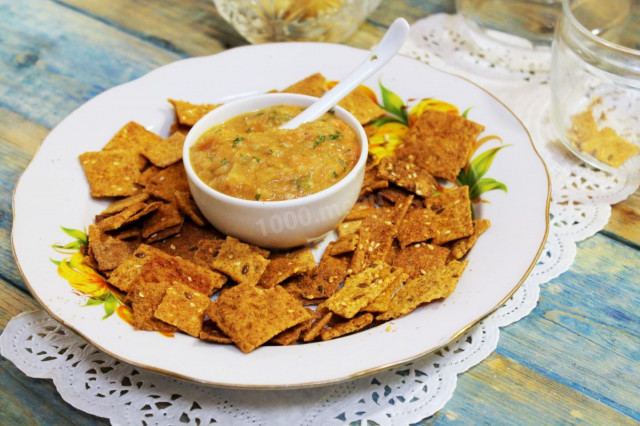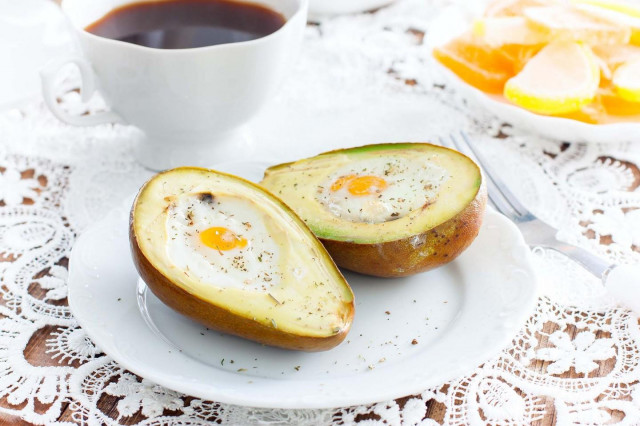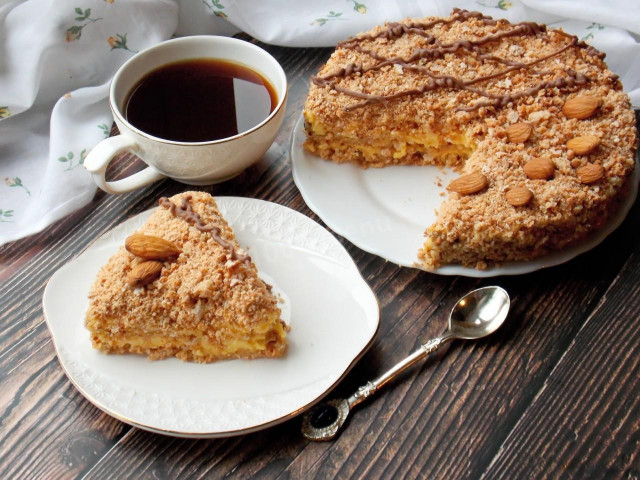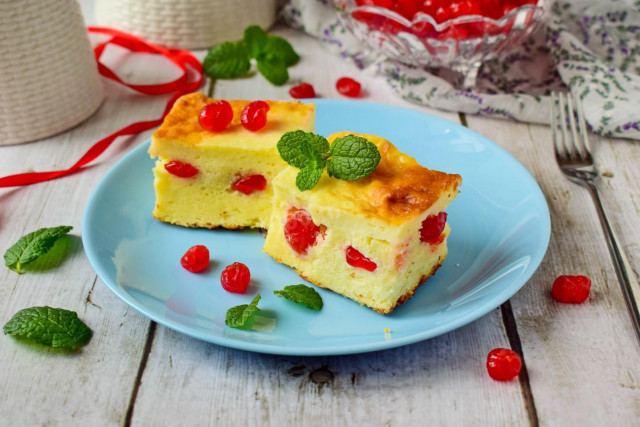Composition / ingredients
Step-by-step cooking
Step 1:
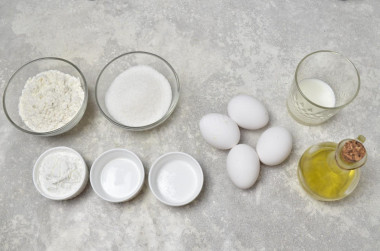
How to make a sponge cake with milk? Prepare the products. All ingredients should be at room temperature, this is important for a successful biscuit. Therefore, remove the eggs and milk from the refrigerator in advance. Take potato starch, butter — odorless.
Step 2:
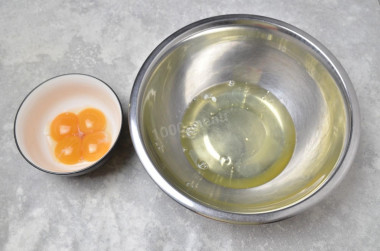
Wash and dry the eggs well. Be sure to wash the eggs before use, as even the seemingly clean shell may contain harmful bacteria. It is best to use food detergents and a brush. Divide the eggs into yolks and whites, pour them into different bowls.
Step 3:
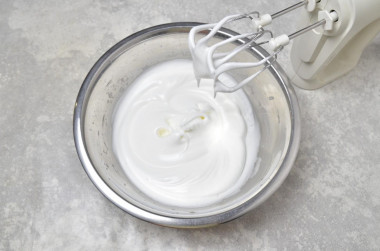
Start whipping the whites with a mixer at medium speed, adding a pinch of salt to them — it will make them more stable. When the whites turn white, start pouring sugar into them in portions, kneading well after each addition. When all the sugar is added, continue whipping until dense peaks. There is no need to achieve consistency as for baking meringue, just a thick mass is enough for a biscuit.
Step 4:
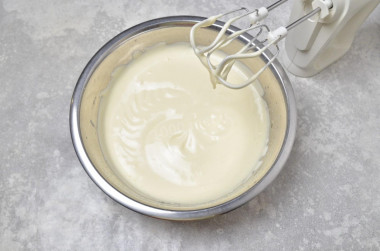
Then, without stopping whipping, add the yolks to the protein mass one at a time. Stop whipping when the mass becomes fluffy and homogeneous.
Step 5:

Sift flour and starch into a separate bowl. Add a pinch of vanilla. Mix the dry ingredients.
Step 6:
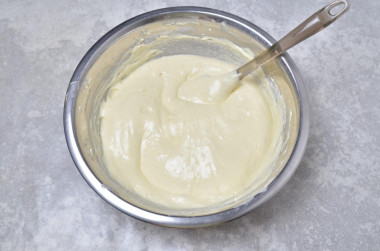
Add flour to the eggs in three steps. Carefully mix each portion with a silicone spatula — it will not destroy the air bubbles in the beaten eggs. The movements should be bottom-up, instilling.
Step 7:

Add vegetable oil to the milk, mix.
Step 8:
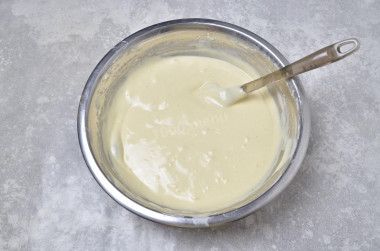
Also pour milk and butter into the dough in portions. Try to pour along the edge of the bowl, also gently stirring the mass with a spatula. You should get a homogeneous dough of the consistency of thick sour cream.
Step 9:

Prepare the baking dish. I baked in a ring with a diameter of 18cm, the bottom was made of foil. There is no need to lubricate the mold. Pour the dough into it. Place the mold itself on a baking sheet.
Step 10:
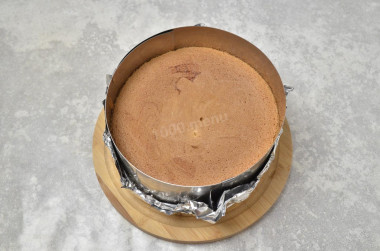
Preheat the oven to 170 ° C, top-bottom, without convection. Bake the biscuit for 40 to 50 minutes, do not open the door for the first 20 minutes. Check readiness with a wooden skewer — it should come out dry from the middle. The exact time will depend on the characteristics of your oven and the height of the mold.
Step 11:
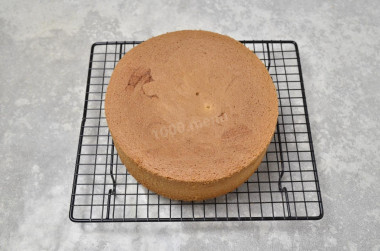
Leave the finished biscuit in the oven for 5 minutes with the door ajar, then take it out and hold for another 5 minutes. Remove the sponge cake from the mold and cool completely on the grill. Then wrap it in a bag or film and put it in the refrigerator for at least 8 hours — the biscuit will become more homogeneous and will not crumble when sliced.
Step 12:
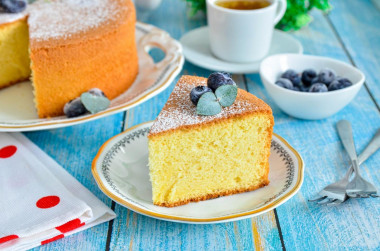
You can serve a sponge cake to the table by simply slicing it into pieces or using it as a base for a cake. Any cream will do. Enjoy your meal!
This is so far the best biscuit recipe I've tried to date — it's really very lush, perfectly smooth and does not crumble when sliced.
It is important to sift the flour to saturate it with oxygen. Then the baking will turn out to be airy and will rise well when baking.
All the secrets of making a tall, beautiful, lush sponge cake read the article about the biscuit dough .
Keep in mind that everyone's ovens are different. The temperature and cooking time may differ from those specified in the recipe. To make any baked dish successful, use useful information about the features of ovens !
Caloric content of the products possible in the composition of the dish
- Whole cow's milk - 68 kcal/100g
- Milk 3.5% fat content - 64 kcal/100g
- Milk 3.2% fat content - 60 kcal/100g
- Milk 1.5% fat content - 47 kcal/100g
- Concentrated milk 7.5% fat content - 140 kcal/100g
- Milk 2.5% fat content - 54 kcal/100g
- Chicken egg - 157 kcal/100g
- Egg white - 45 kcal/100g
- Egg powder - 542 kcal/100g
- Egg yolk - 352 kcal/100g
- Ostrich egg - 118 kcal/100g
- Whole durum wheat flour fortified - 333 kcal/100g
- Whole durum wheat flour universal - 364 kcal/100g
- Flour krupchatka - 348 kcal/100g
- Flour - 325 kcal/100g
- Granulated sugar - 398 kcal/100g
- Sugar - 398 kcal/100g
- Starch - 320 kcal/100g
- Vegetable oil - 873 kcal/100g
- Salt - 0 kcal/100g
- Vanillin - 288 kcal/100g

